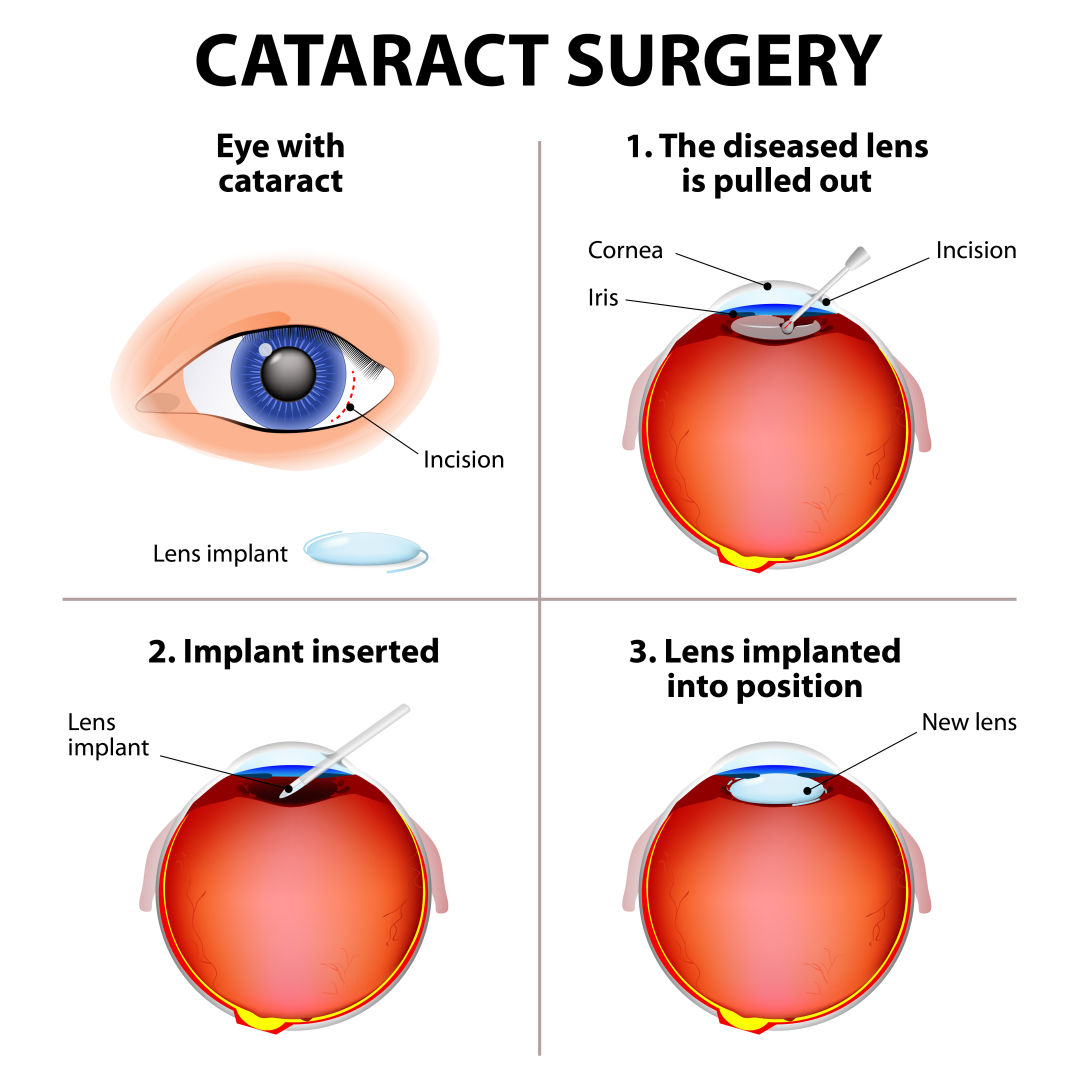New Cataract Lens Technology Offered at Sarasota Practice

Image: Zyn Chakrapong/Shutterstock
Sarasota's Center for Sight is one of three vision centers in the nation offering one of the latest advances in cataract surgery technology. The TECNIS Synergy Intraocular Lens was developed by Johnson & Johnson Vision to deliver uninterrupted, full-range vision so that patients will not need to wear glasses or contact lenses. It is the most advanced lens implant for cataract surgery to date.
"The big thing that's changed is not the cataract procedure, but the lens implant," says Center for Sight's medical director William Lahners, M.D., F.A.C.S. "As the human eye gets older, it undergoes changes."
Lahners says the first change occurs at 40 to 50 years old, where the lens stiffens and the use of reading glasses or bifocals is needed. The second stage is developing cataracts, where the lens loses its transparency. Cataract surgery is simply the removal of this cloudy lens and replacing it with a clear lens.
"We've been using intraocular implants, or IOLs, for about 40 years or so, but they have undergone some really amazing progress," says Lahners. "In 2003, the very first FDA-approved advanced technology lens was introduced, and since then, we've been able to give both distance vision and near vision in both eyes. Synergy is the latest and greatest advancement in this technology."

Image: SHUTTERSTOCK
Prior to the Synergy lens, even advanced technology implants had limitations in their ability to provide simultaneous distance and near vision. This new technology will allow a full range of vision under a broader range of lighting conditions to patients who qualify for the lens. Patients will have improved contrast sensitivity, visual acuity and depth perception. According to Lahners, pre-operative selection of patients requires biometric analysis of the eye to determine who is a good candidate and how successful the procedure will be.
"Doctors like myself, who do thousands of surgeries a year, have the best chance of success and achieving a perfect outcome," says Lahners. "We also have the ability to make corrections, or post-operative enhancements, fine tuning vision to get closer to where patients want to be."
Who makes the perfect candidate? Lahners says someone with a healthy eye and the capability of high-quality vision. Not everyone qualifies for these lenses; you have to have a healthy cornea (front part of the eye), and retina (back part of the eye). Implanted in a healthy eye, the lens has a greater chance of success.
Is the Synergy lens covered by insurance? Cataract surgery involves a medical and vision component. The medical component--that which impairs daily functioning--can be covered by Medicare, Medicaid, private and secondary insurance. Vision is something that health insurance does not typically cover, so there will be out-of-pocket costs for the lenses themselves. Lahners says the total cost depends on the individual's deductible.
While the TECNIS Synergy Intraocular Lens is only available in three vision centers--California, South Dakota and Florida--Johnson & Johnson is hoping for a widespread roll out as the nation's ophthalmologists become more familiar with the technology.
"When companies come out with a big advancement, they like to have rollouts at top centers," says Lahners. Lahners says in addition to traditional cataract surgery, these centers offer laser cataract surgery--a more accurate way of proceeding, including a method that allows correction of refractive errors, or changes in the optics of the eye that cause vision to be blurry.
The ultimate benefit of this new lens is allowing patients to return to the lifestyles that poor vision would not allow, such as playing sports and reading. "This type of technology brings us one step closer to providing full range vision to all people," says Lahners.



